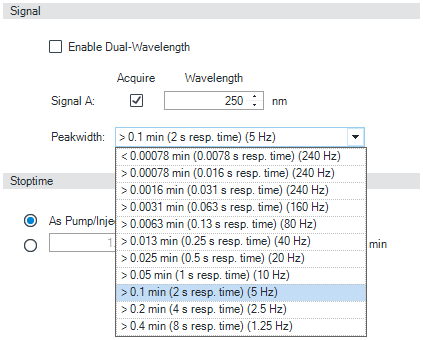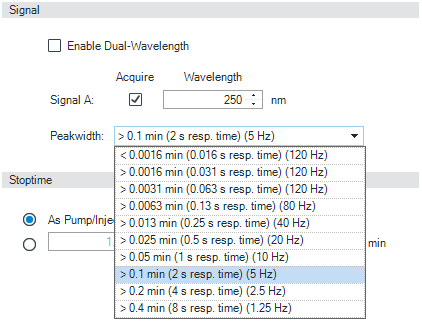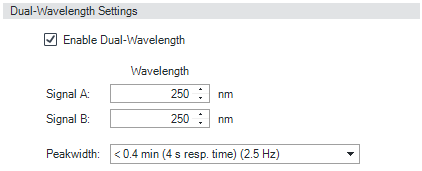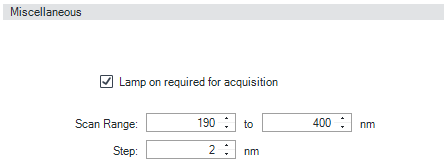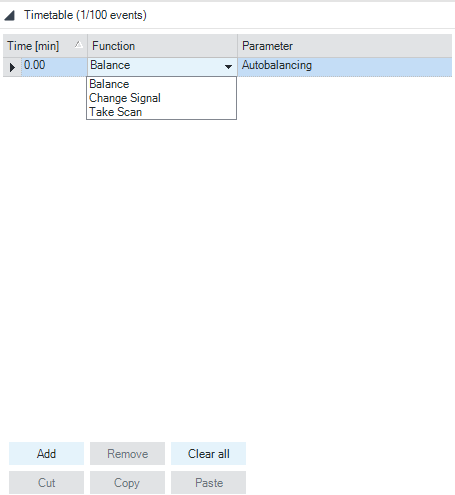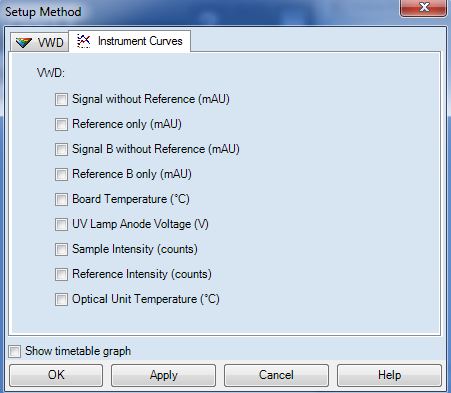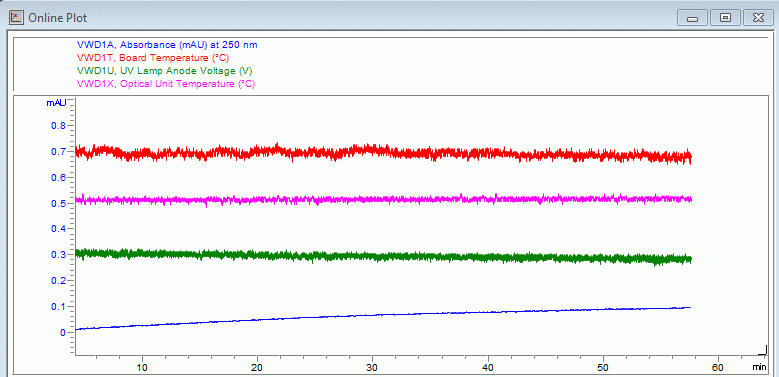Method Parameter Settings
These settings are available via Menu > Instrument > Set up Instrument Method or via right click into the module’s active area (does not show the Instrument Curves tab).
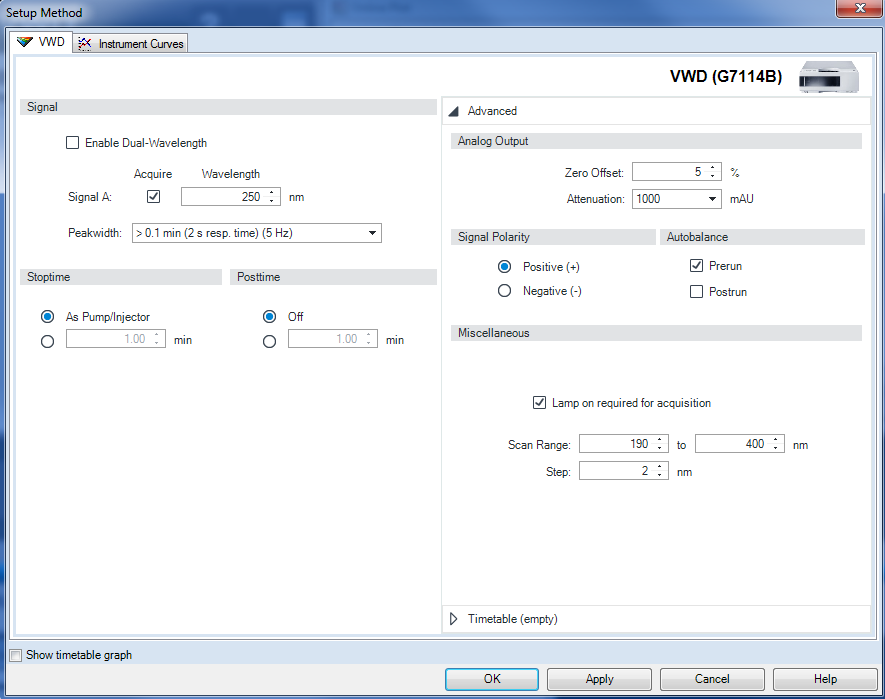
NOTE
For additional help and support: Highlight the desired cell and press F1. A help screen will open with additional information and documentation about the topic.
G7114B Peakwidth settings up to 240 Hz
G7114A Peakwidth settings up to 120 Hz
G7114B Dual Wavelength Settings | Signal Wavelength Single Wavelength (190 – 600 nm, step 1) Dual Wavelength Mode enables the multi-wavelength mode with two wavelengths. Peakwidth (Responsetime, Data Rate) Peakwidth enables you to select the peak width (response time) for your analysis. The peak width is defined as the width of a peak, in minutes, at half the peak height. Set the peak width to the narrowest expected peak in your chromatogram. The peak width sets the optimum response time for your detector. The peak detector ignores any peaks that are considerably narrower, or wider, than the peak width setting. The response time is the time between 10 % and 90 % of the output signal in response to an input step function. When the All spectrum storage option is selected, then spectra are acquired continuously depending on the setting of the peak width. The time specified by the peak width is used as a factor in the acquisition of spectra. The acquisition time for one spectrum is slightly less than the peak width divided by 8 , which is the acquisition time. Limits: When you set the peak width (in minutes), the corresponding response time is set automatically and the appropriate data rate for signal and spectra acquisition is selected.
|
| Stoptime/Posttime The stoptime is the time where either the complete system stops (As Pump/Injector) or the module (if different from system stop time). The data collection is stopped at this time. A posttime period can be used to allow module’s items to equilibrate (e.g. after gradient change or temperature change). |
| Analog Output The range can be set to either 100 mV or 1 V full scale, see .
|
| Signal Polarity Can be switched to negative (if required). Autobalance Defines, whether a balance is performed prior to a run and/or after a run has finished. |
| Miscellaneous Lamp on required for acquisition: If unchecked, the lamp will be turned off after the analysis has finished. Note that the lamp on requires at least one hour warm-up time, see Warm up of the Detector. Scan Range / Step: Stop-Flow scan range / step. Access to the scan feature is only possible during run. See Scanning with the VWD. |
| Timetable You may set up time events to change functions with their parameters over the run time. Add lines as required. Time Limits: 0.00 to 99999.00 min in steps of 0.01 min. Via the buttons in the bottom area, time table lines can be added, removed, cut copied, pasted or completely cleared. Based on the chosen function, a certain parameter can be selected. |
| Instrument Curves The detector has several signals (internal temperatures, voltages of lamps) that can be used for diagnosing problems. These can be baseline problems deriving from deuterium lamps wander / drift problems due to temperature changes. These signals can be used in addition to the normal baseline signal to determine whether correlation to temperature or voltage/current of the lamp. These signals are available via the Agilent ChemStation Online Plot/Data Signal and/or Agilent Lab Advisor Software. |
base-id: 3283586187
id: 9007202538327179
